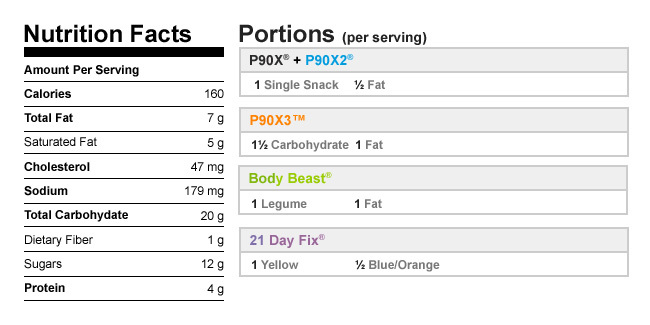
Power Protein Egg Cups
Start your morning off strong with this low-fat, high-protein egg cup recipe with turkey bacon, shredded chicken, and sweet onions and peppers.
Start your morning off strong with this low-fat, high-protein egg cup recipe with turkey bacon, shredded chicken, and sweet onions and peppers.
Total Time: 35 min.
Prep Time: 15 min.
Cooking Time: 20 min.
Yield: Makes 6 servings, 2 egg cups each
Prep Time: 15 min.
Cooking Time: 20 min.
Yield: Makes 6 servings, 2 egg cups each
Ingredients:
Nonstick cooking spray
½ cup unsweetened almond milk
16 large egg whites (2 cups)
Sea salt (or Himalayan salt) and ground black pepper (to taste; optional)
2 slices cooked turkey bacon, chopped
3 oz. cooked shredded chicken breast
2 cups chopped red bell peppers
1 cup chopped onion
Nonstick cooking spray
½ cup unsweetened almond milk
16 large egg whites (2 cups)
Sea salt (or Himalayan salt) and ground black pepper (to taste; optional)
2 slices cooked turkey bacon, chopped
3 oz. cooked shredded chicken breast
2 cups chopped red bell peppers
1 cup chopped onion
Preparation:
1. Preheat oven to 350° F.
2. Prepare twelve muffin cups by coating with spray. Set aside.
3. Combine almond milk and egg whites in a medium bowl. Season with salt and pepper, if desired; whisk to blend. Set aside.
4. Evenly divide turkey bacon, chicken, bell peppers, and onion between prepared muffin cups.
5. Evenly pour egg white mixture over turkey bacon mixture.
6. Bake for 15 to 20 minutes, or until a toothpick inserted into the center of egg cups comes out clean, and eggs are set.
1. Preheat oven to 350° F.
2. Prepare twelve muffin cups by coating with spray. Set aside.
3. Combine almond milk and egg whites in a medium bowl. Season with salt and pepper, if desired; whisk to blend. Set aside.
4. Evenly divide turkey bacon, chicken, bell peppers, and onion between prepared muffin cups.
5. Evenly pour egg white mixture over turkey bacon mixture.
6. Bake for 15 to 20 minutes, or until a toothpick inserted into the center of egg cups comes out clean, and eggs are set.
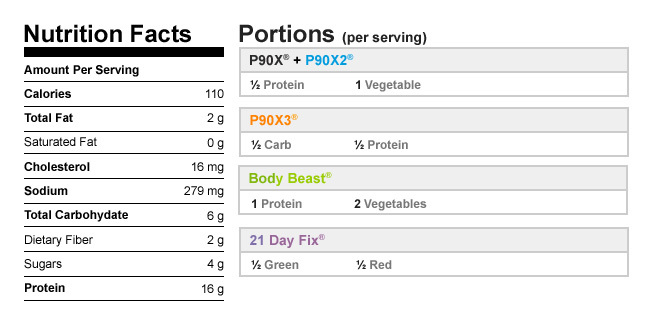
Southwestern Egg Cups
Eggs are the fuel and jalapeños are the fire in this egg cup recipe. Throw in some black beans and cheddar cheese and you have one flavorful breakfast.
Eggs are the fuel and jalapeños are the fire in this egg cup recipe. Throw in some black beans and cheddar cheese and you have one flavorful breakfast.
Total Time: 35 min.
Prep Time: 15 min.
Cooking Time: 20 min.
Yield: Makes 6 servings, 2 egg cups each
Cooking Time: 20 min.
Yield: Makes 6 servings, 2 egg cups each
Ingredients:
Nonstick cooking spray
½ cup unsweetened almond milk
16 large egg whites (2 cups)
Sea salt (or Himalayan salt) and ground black pepper (to taste; optional
12 medium jalapeños, seeds and veins removed, chopped
1½ cups black beans, drained, rinsed
6 oz. cheddar cheese (about ¾ cup)
Nonstick cooking spray
½ cup unsweetened almond milk
16 large egg whites (2 cups)
Sea salt (or Himalayan salt) and ground black pepper (to taste; optional
12 medium jalapeños, seeds and veins removed, chopped
1½ cups black beans, drained, rinsed
6 oz. cheddar cheese (about ¾ cup)
Preparation:
1. Preheat oven to 350° F.
2. Prepare twelve muffin cups by coating with spray. Set aside.
3. Combine almond milk and egg whites in a medium bowl. Season with salt and pepper, if desired; whisk to blend. Set aside.
4. Evenly divide jalapenos, beans, and cheese between prepared muffin cups.
5. Evenly pour egg mixture over broccoli mixture.
6. Bake for 15 to 20 minutes, or until a toothpick inserted into the center of egg cups comes out clean, and eggs are set.
1. Preheat oven to 350° F.
2. Prepare twelve muffin cups by coating with spray. Set aside.
3. Combine almond milk and egg whites in a medium bowl. Season with salt and pepper, if desired; whisk to blend. Set aside.
4. Evenly divide jalapenos, beans, and cheese between prepared muffin cups.
5. Evenly pour egg mixture over broccoli mixture.
6. Bake for 15 to 20 minutes, or until a toothpick inserted into the center of egg cups comes out clean, and eggs are set.
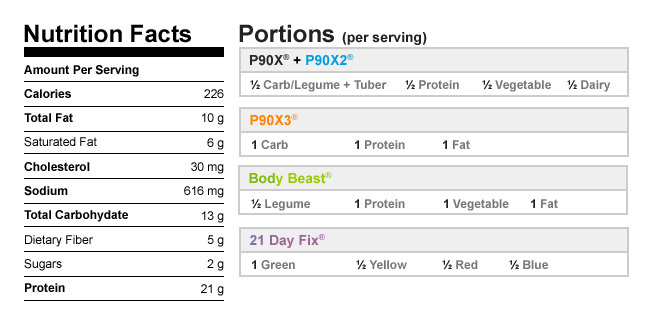
Super Green Egg Cups
21 Day Fix and Popeye-approved, this egg cup recipe is loaded with three types of green vegetables. Wanna go really crazy? Sprinkle these with chopped chives.
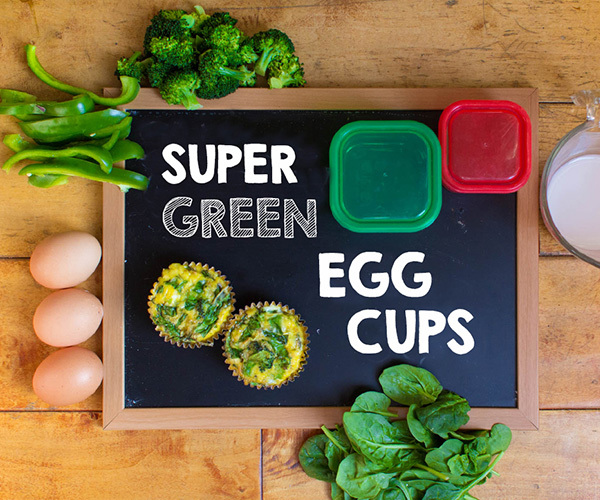
21 Day Fix and Popeye-approved, this egg cup recipe is loaded with three types of green vegetables. Wanna go really crazy? Sprinkle these with chopped chives.

Total Time: 35 min.
Prep Time: 15 min.
Cooking Time: 20 min.
Yield: Makes 6 servings, 2 egg cups each
Prep Time: 15 min.
Cooking Time: 20 min.
Yield: Makes 6 servings, 2 egg cups each
Ingredients:
Nonstick cooking spray
¼ cup unsweetened almond milk
12 large eggs, lightly beaten
Sea salt (or Himalayan salt) and ground black pepper (to taste; optional)
1 cup steamed broccoli, coarsely chopped
½ cup chopped green bell pepper
1 cup chopped raw spinach
Nonstick cooking spray
¼ cup unsweetened almond milk
12 large eggs, lightly beaten
Sea salt (or Himalayan salt) and ground black pepper (to taste; optional)
1 cup steamed broccoli, coarsely chopped
½ cup chopped green bell pepper
1 cup chopped raw spinach
Preparation:
1. Preheat oven to 350° F.
2. Prepare twelve muffin cups by coating with spray. Set aside.
3. Combine almond milk and eggs in a medium bowl. Season with salt and pepper, if desired; whisk to blend. Set aside.
4. Evenly divide broccoli, spinach, and bell peppers between prepared muffin cups.
5. Evenly pour egg mixture over broccoli mixture.
6. Bake for 15 to 20 minutes, or until a toothpick inserted into the center of egg cups comes out clean, and eggs are set.
1. Preheat oven to 350° F.
2. Prepare twelve muffin cups by coating with spray. Set aside.
3. Combine almond milk and eggs in a medium bowl. Season with salt and pepper, if desired; whisk to blend. Set aside.
4. Evenly divide broccoli, spinach, and bell peppers between prepared muffin cups.
5. Evenly pour egg mixture over broccoli mixture.
6. Bake for 15 to 20 minutes, or until a toothpick inserted into the center of egg cups comes out clean, and eggs are set.
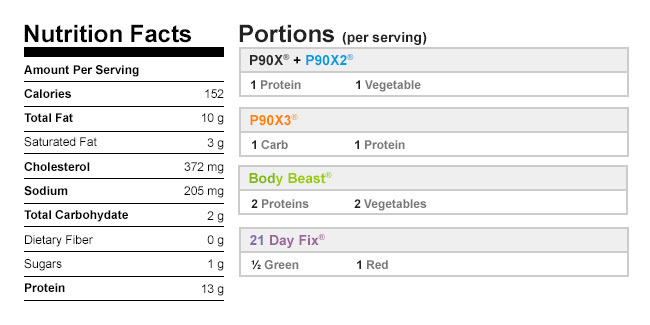
Via the Team Beachbody Blog and Recipes and photos by Amanada Meixner













